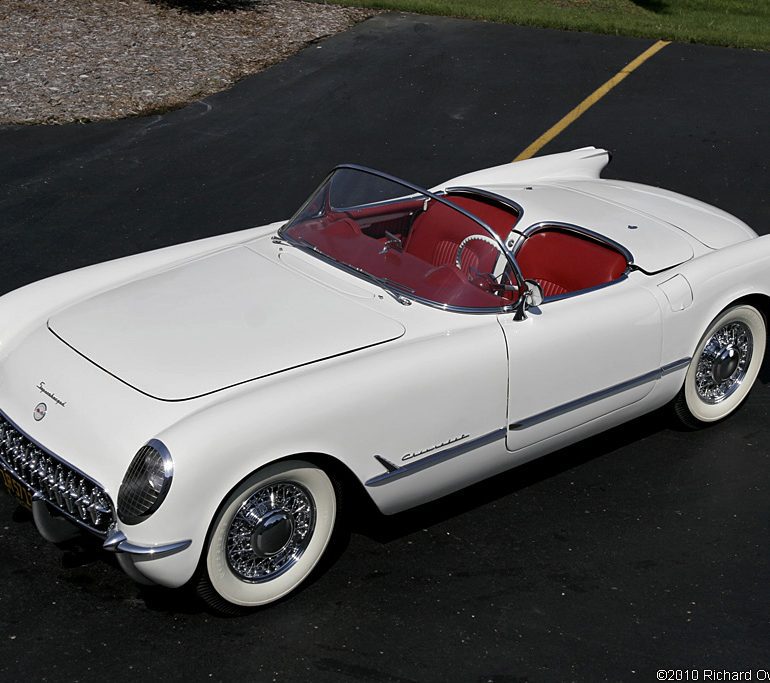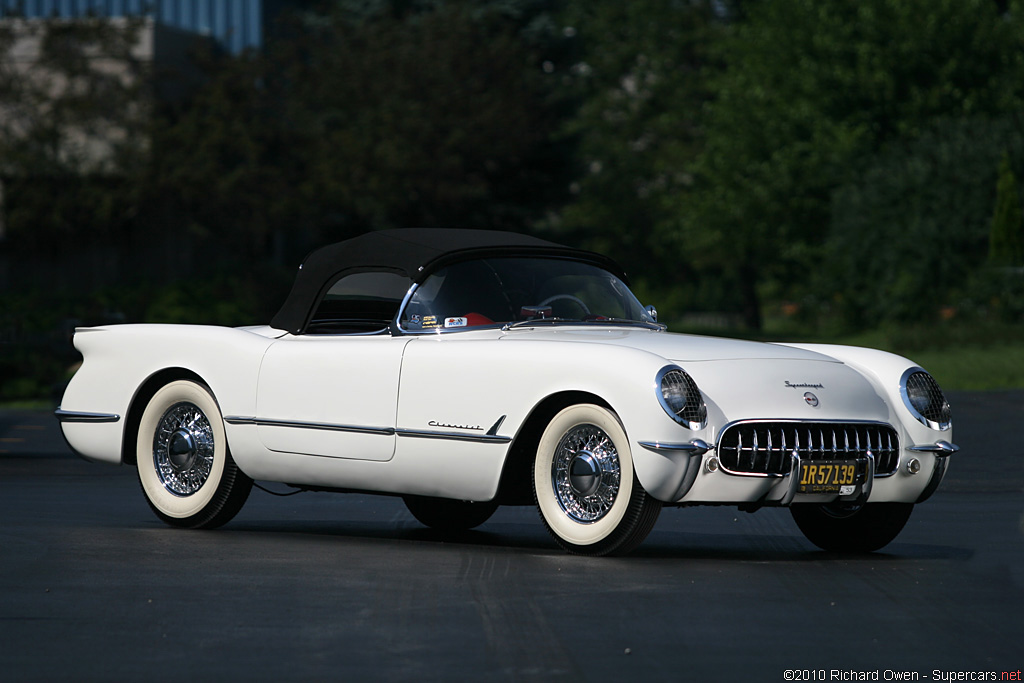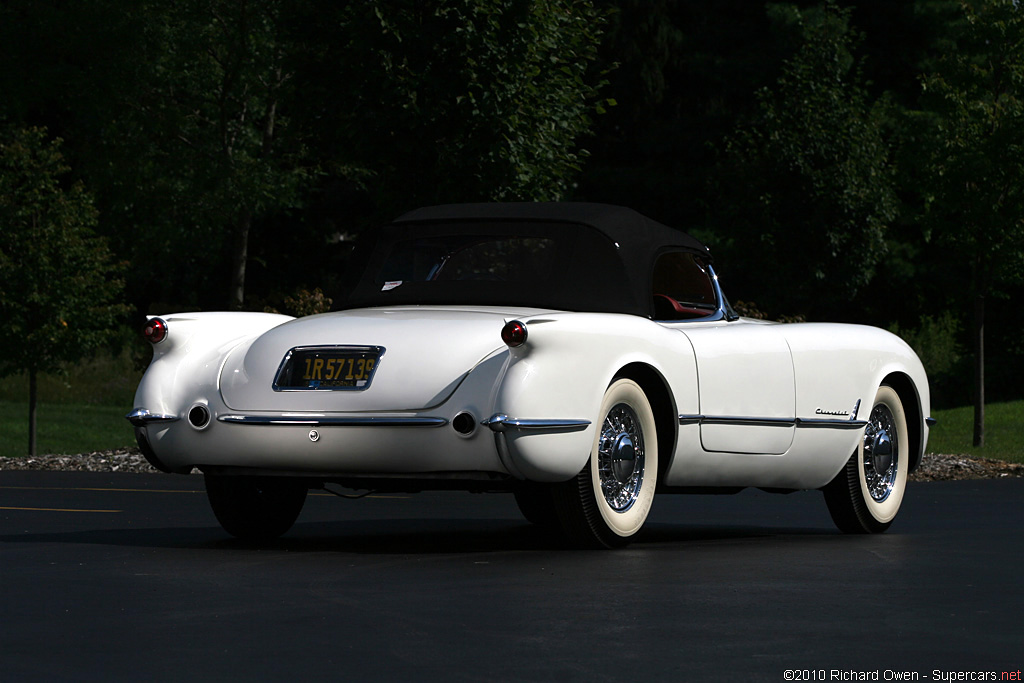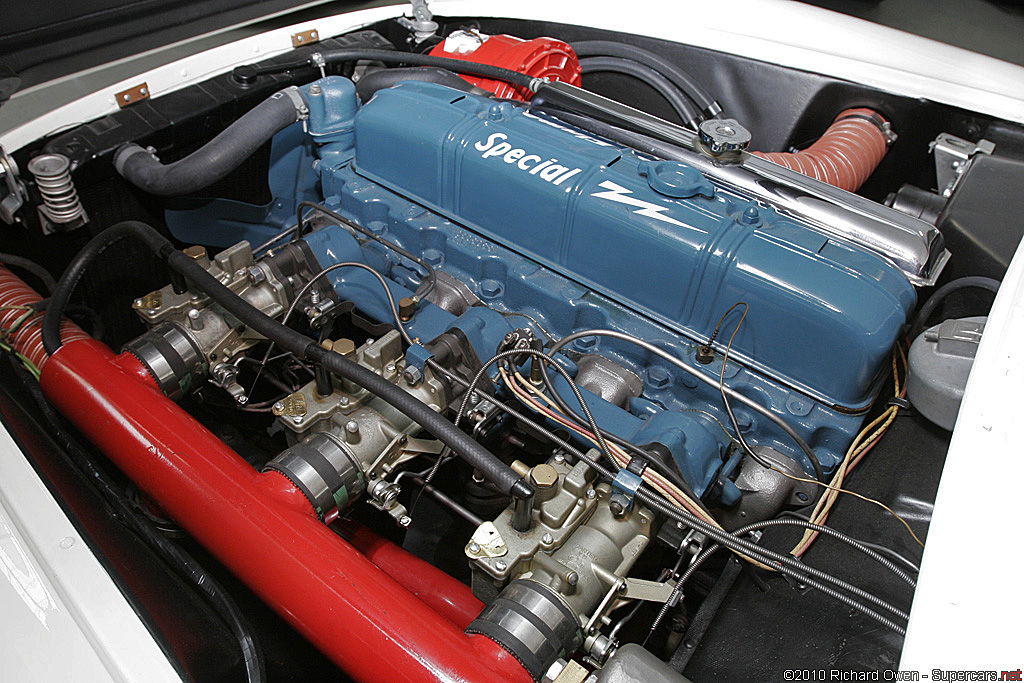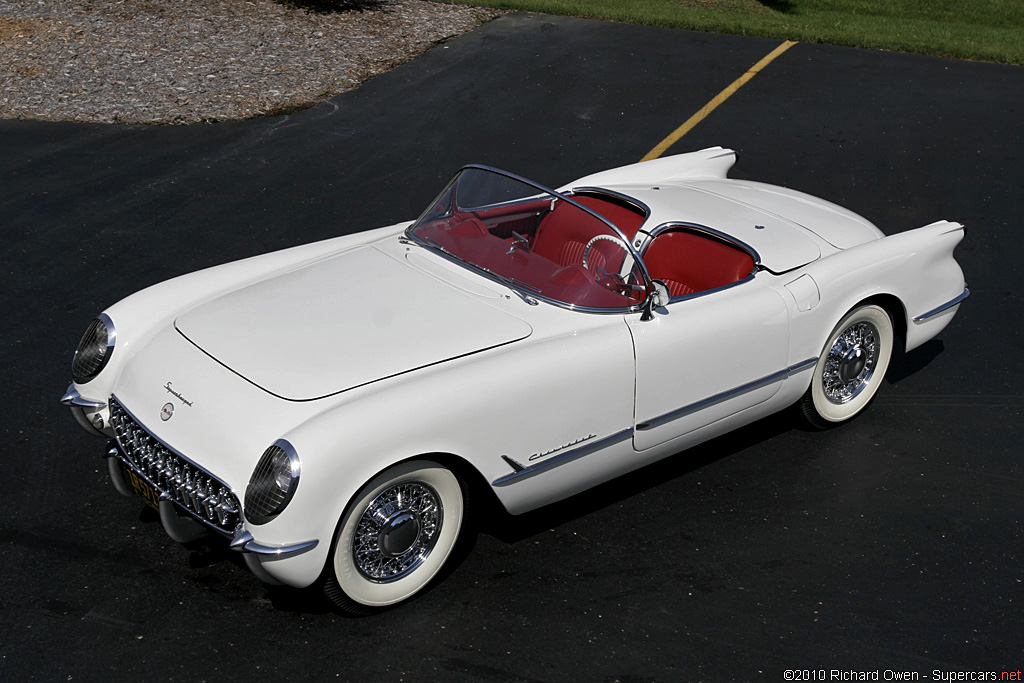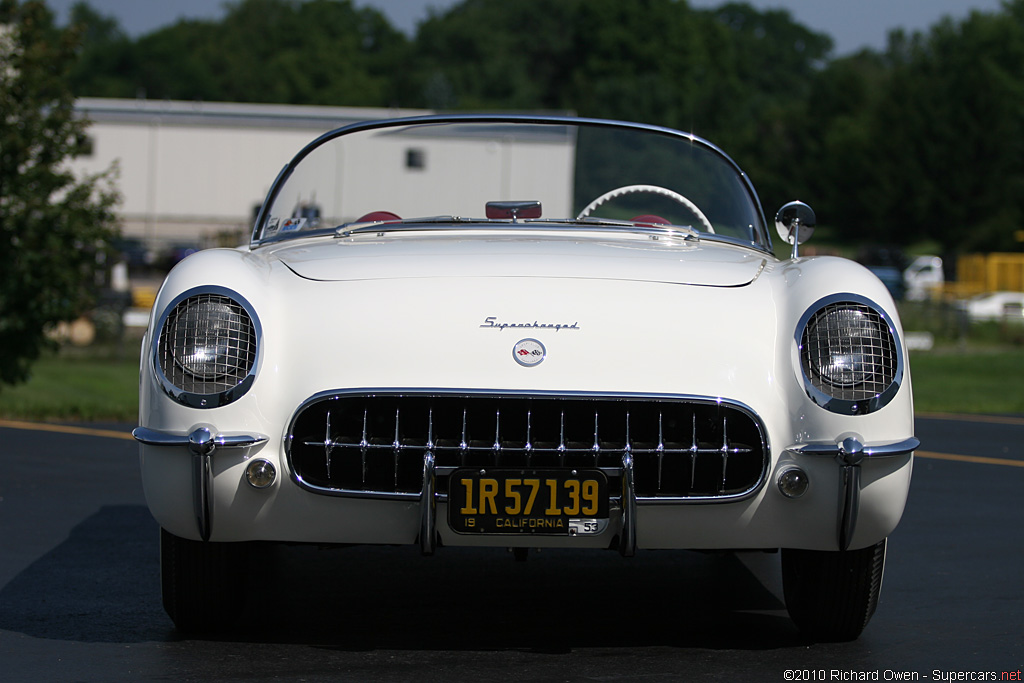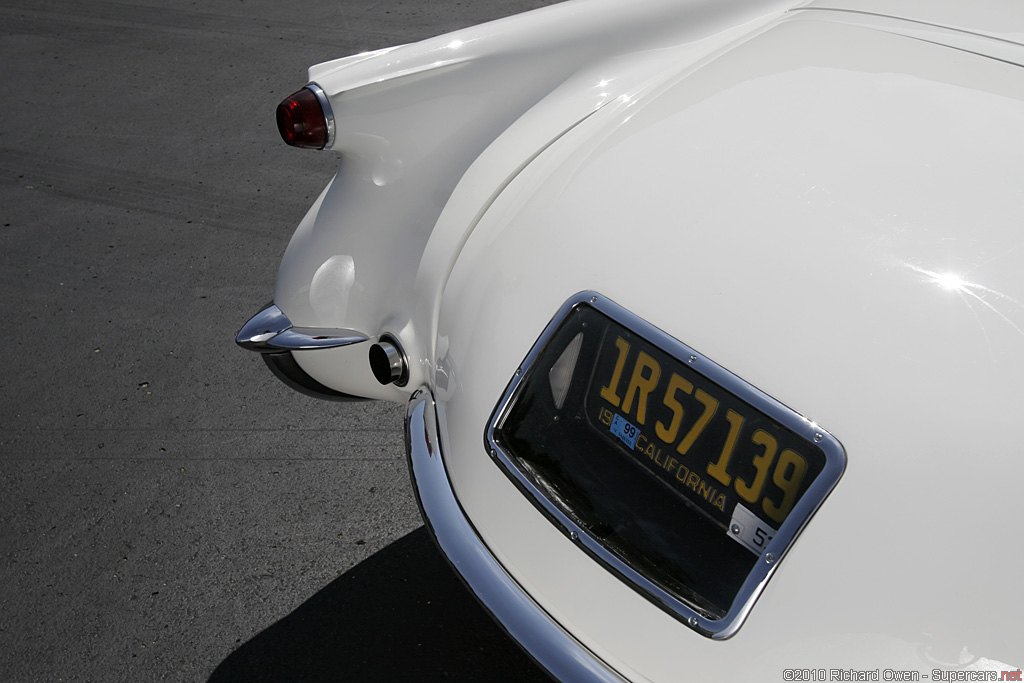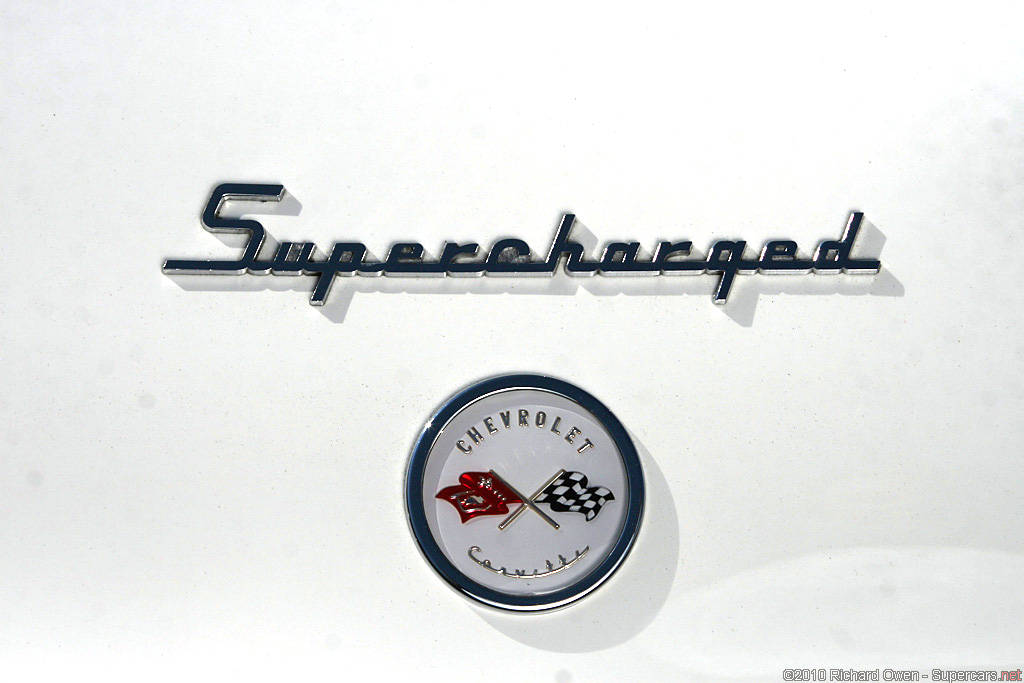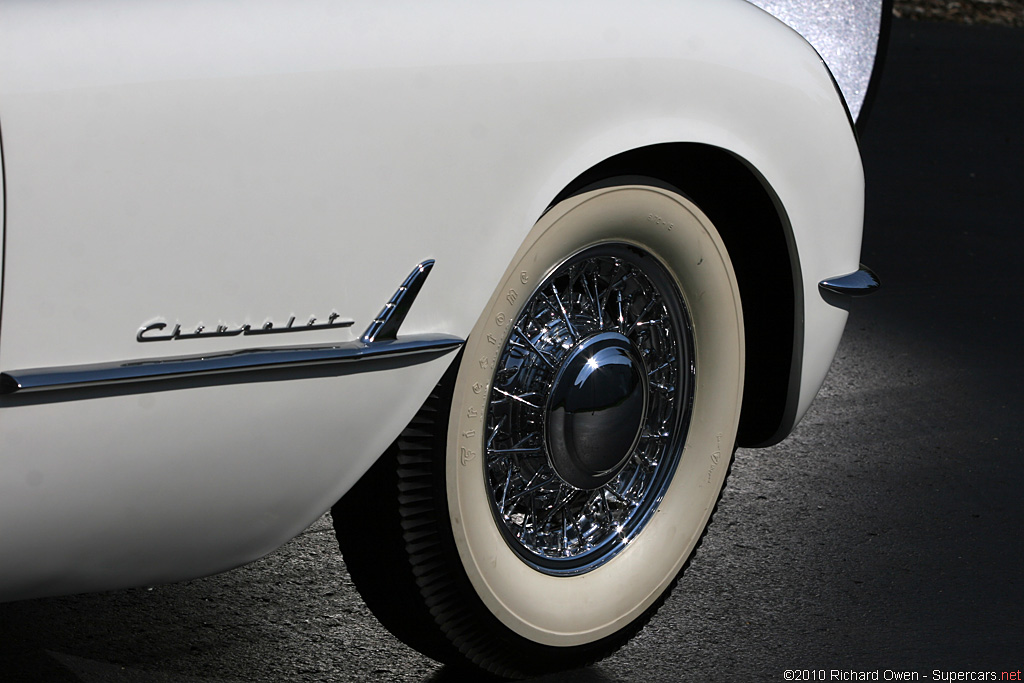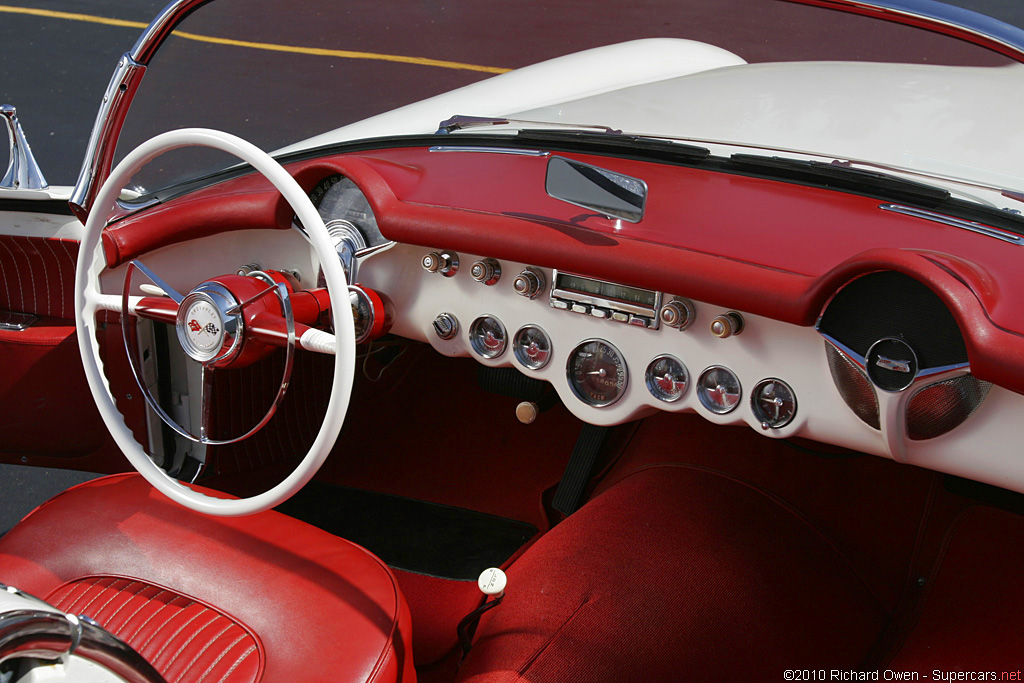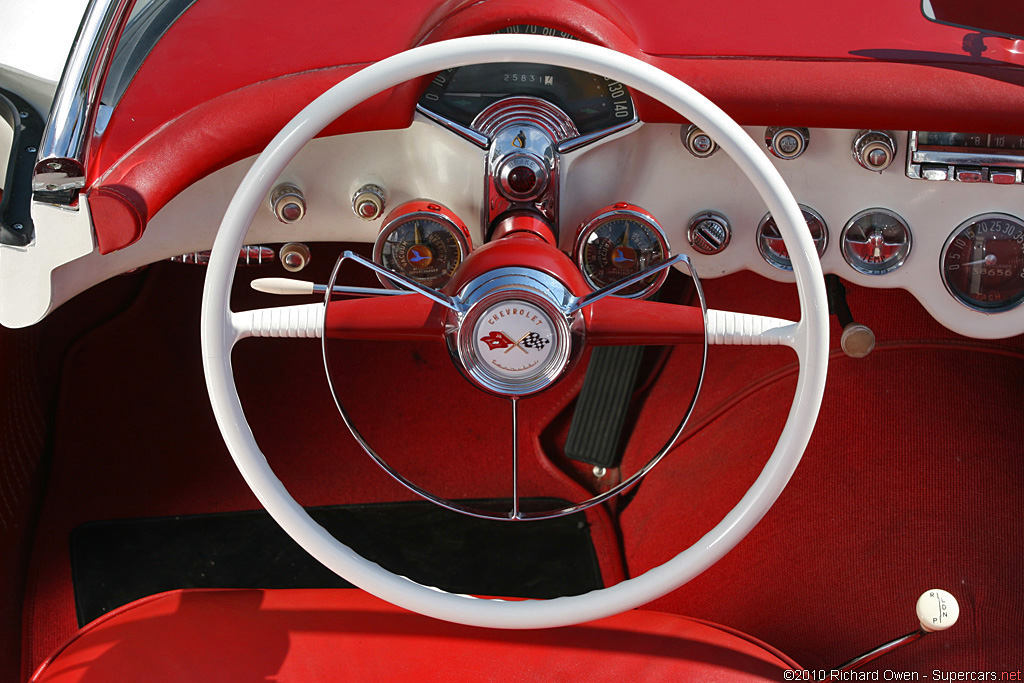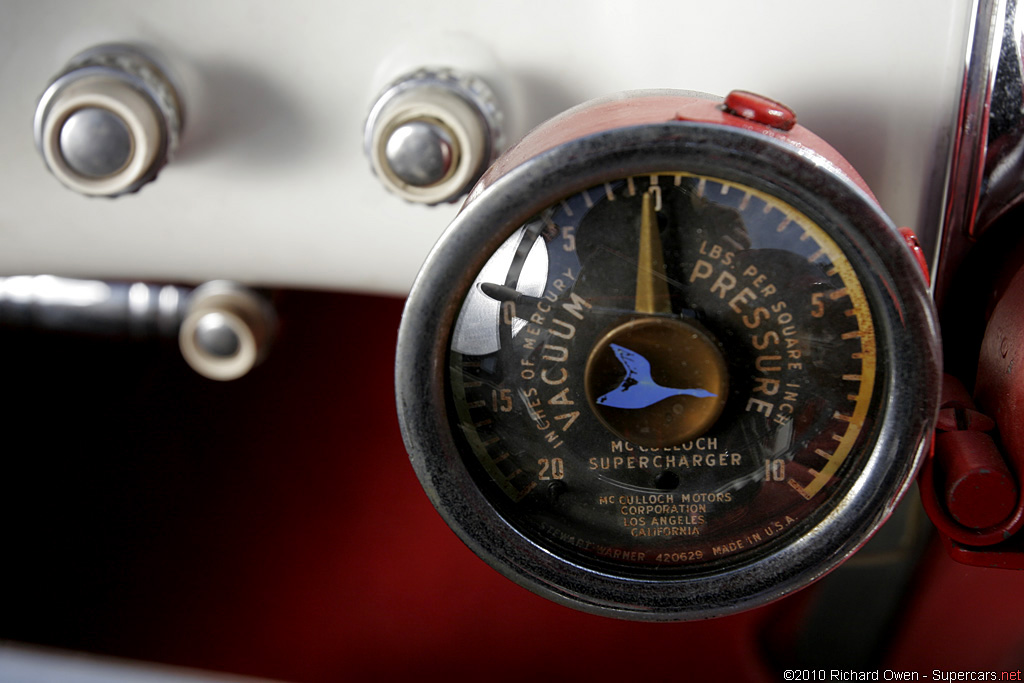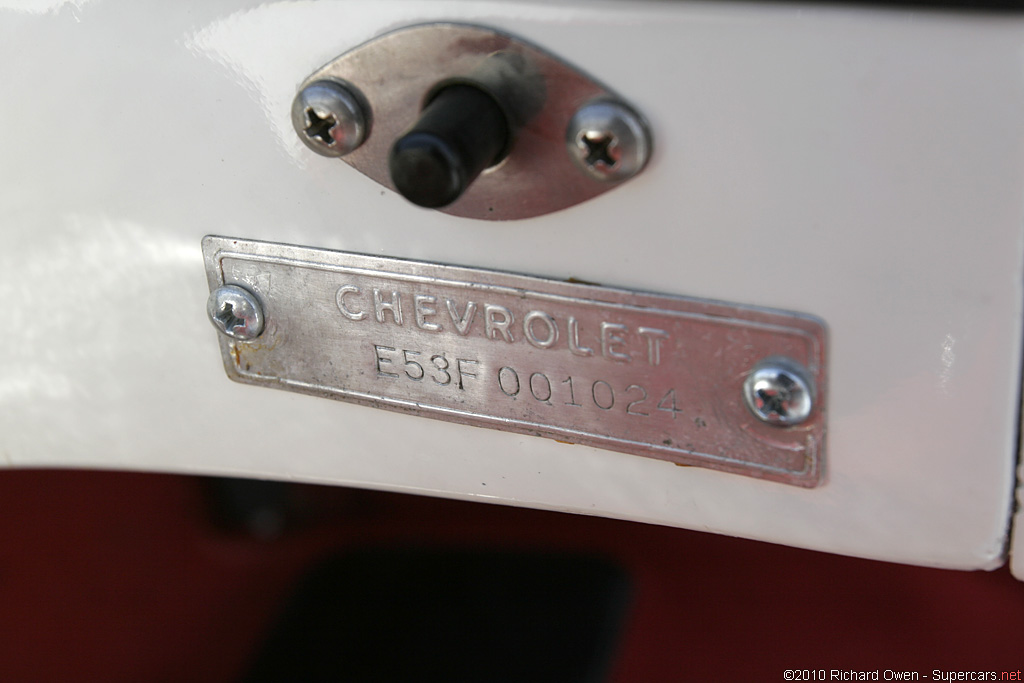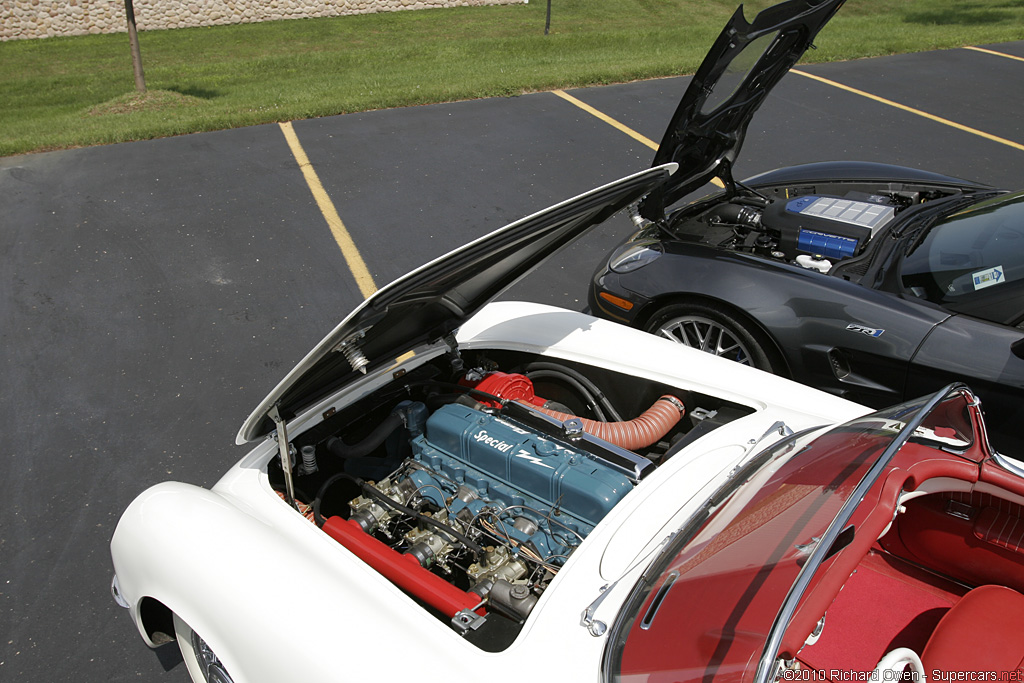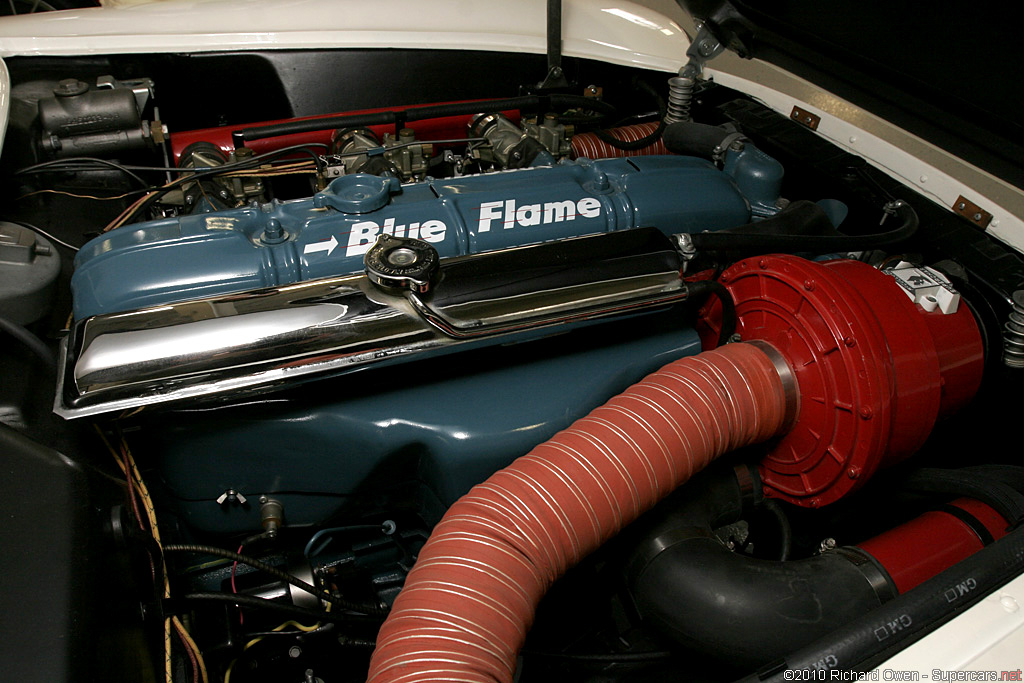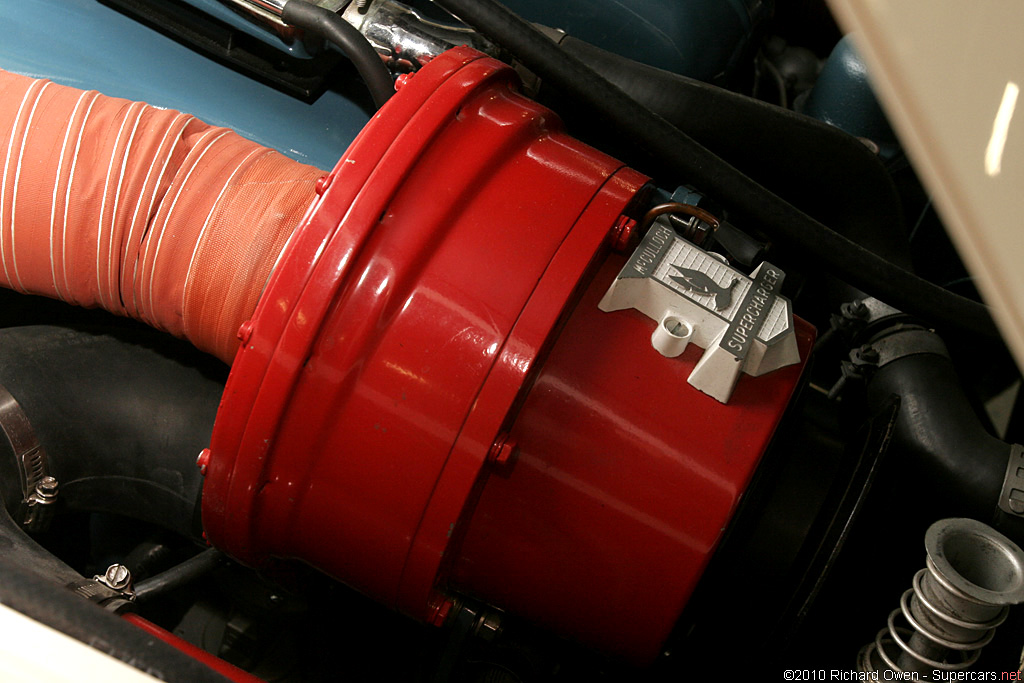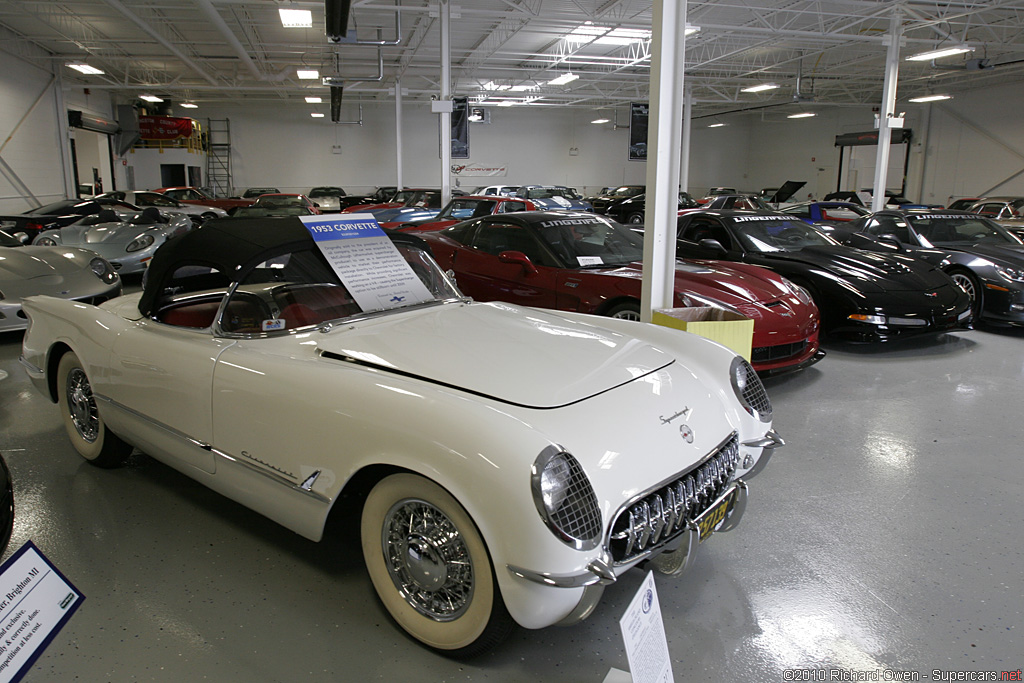1953 McCulloch Supercharged Corvette
To turn the 1953 Corvette into a high-performance sports car, McCulloch Motors created an experimental supercharged model. Two such cars were developed as a possible solution to raise the specific output of original ‘blue flame’ inline-6 that produced less horsepower than the competing Ford Thunderbird. Proposed to GM as a possible factory option, the supercharger was never put into production.
McCulloch Motors Corporation managed to locate one of the 300 Corvettes produced in 1953 by purchasing E52F001024 from the president of Standard Oil. Finished in Polo White with red interior, this became the first supercharged Corvette in the world. McCulloch’s focus was on the new supercharger package, but wire wheels were also fitted.
Engineer Art Oehrli was responsible for the design at McCulloch1. Since there was little space around the engine, the supercharger had to be positioned on the exhaust side and the air filter relocated into the fender. This meant the intake tract had to run around the front of the engine into a new intake plenium that attached to the three carburetors.
While the design was somewhat clumsy, power increased 35% from 87 to 117 bhp. At the time, McCulloch & GM listed the power output of 150 bhp. The performance increase meant that 0-60 times was reduced from 12 to 9 seconds.1
Because Chevrolet was focused on fitting the V8 engine into the Corvette, they rejected the idea of a supercharger. Afterward McCulloch did little to promote the supercharger to the general public and only two cars were fitted with them. By 1955 the V8 was eventually fitted and many Corvette purists consider this the first real sporting Corvette. Not until 2009 was a supercharger fitted by the factory for the ZR1.
Chassis
E52F001024-This is the factory development car used by Art Oehrli Jr to develop the McCulloch supercharger package. It was first owned by the president of Standard Oil before being purchased by Oehrli himself. After GM rejected the idea, this car was then stripped of its supercharger, but all the pieces were retained. In 1988 the car was restored by Dave Ferguson which including recovering the whole body in fibreglass. The original supercharger ducts were still intact and Dave worked with the Oehrli family during the whole process. Afterward it received numerous accolades including NCRS Heritage Award in 1999.1 Later it was sold and included as part of the Lingenfelter Collection.
Sources & Further Reading.
1.Ferguson, Fred & Fred Neff. ‘Supercharged Twins’ Corvette Restorer. Winter 2010.
Story by Richard Owen
In Detail
| tags | c1c, bestof |
| submitted by | Richard Owen |
| type | Professionally Tuned Car |
| built at | USA |
| production | 2 |
| engine | Stovebolt Inline-6 |
| position | Front Longitudinal |
| aspiration | Supercharged |
| valvetrain | Pushrod OHV |
| fuel feed | 3×1 BBL |
| displacement | 3851 cc / 235.0 in³ |
| bore | 90.42 mm / 3.56 in |
| stroke | 99.82 mm / 3.93 in |
| compression | 8.0:1 |
| power | 87.2 kw / 117 bhp |
| specific output | 30.38 bhp per litre |
| bhp/weight | 89.59 bhp per tonne |
| body / frame | Fibreglass Body |
| driven wheels | Wire Wheels |
| front tires | 6.70×15 |
| rear tires | 6.70×15 |
| r suspension | Live Axle w/Leaf Springs |
| curb weight | 1306 kg / 2880 lbs |
| wheelbase | 2591 mm / 102 in |
| front track | 1448 mm / 57 in |
| rear track | 1494 mm / 58.8 in |
| length | 4249 mm / 167.3 in |
| width | 1773 mm / 69.8 in |
| height | 1308 mm / 51.5 in |
| transmission | 2-Speed Powerglide Automatic |
| top speed | ~160.9 kph / 100 mph |
| 0 – 60 mph | ~11.4 seconds |


